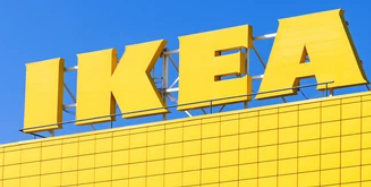
Charlie Brooks
Apr 22, 2022 16:49

Historically, nickel has been a basic metal used in the silver industry as a corrosion-resistant coating.
Apart from being in great demand in the stainless-steel industry, nickel has also been a key component in producing electric car batteries owing to its environmentally friendly features.
There are several ETFs to select from, so be careful to choose one that fits your financial objectives.
Nickel ore is found in two distinct deposit types in the Earth's crust: laterite and sulfide. According to the most current assessment of nickel by the U.S. Geological Survey, recognized land-based resources averaging 0.5 percent nickel or greater contain at least 300 million metric tons (M.T.) of nickel; about 60% of that quantity is in laterite deposits, and 40% is in sulfide deposits.

Nickel mining provides distinct obstacles for each deposit type. Sulfide deposits are found very deep in the Earth's crust, making extraction challenging. Additionally, they are often smaller than laterite deposits and may have a fluctuating grade. According to the U.S. Geological Survey, the finding of sulfide deposits has been declining for decades, prompting exploration companies to focus their efforts on more difficult places such as East-Central Africa and the subarctic.
By contrast, laterite deposits are close to the surface, making them suitable for open-pit mining. Additionally, they have more constant grades and are often greater in size than sulfide deposits. However, a disadvantage of laterite deposits is that ore extraction requires acid leaching at elevated temperatures.
Indonesia, the Philippines, Russia, and New Caledonia were the world's leading nickel producers in 2020. Indonesia produced 760,000 metric tons of nickel, the Philippines produced 320,000 metric tons, Russia supplied 280,000 metric tons, and New Caledonia added 200,000 metric tons to the nickel supply. Glencore (LSE: GLEN, OTC Pink: GLCNF) and Vale (NYSE: VALE) are the two biggest nickel companies globally.
While stainless steel continues to use over 70% of nickel, it's worth noting that nickel ranks highly among battery metals and is extensively utilized in the lithium-ion batteries that power electric cars (E.V.s). Due to the growth of electric vehicles, analysts anticipate that nickel will become one of Indonesia's greatest industries, maybe surpassing palm oil, the country's second-largest export. According to Forbes, the nation is on course to increase its share of global nickel output from 28% to 60% by 2029.
On Thursday, nickel futures fell 8% as investors hurried to dump their long bets. Yesterday, the London Metal Exchange (LME) halted nickel trading on its electronic system due to a technical fault within a minute of starting. The price fell by the maximum allowable 5%. Later, the LME increased the trading ceiling to 8%, which is much less than the 15% for other metals.
Russia, which supplies 10% of the world's oil, is now the most sanctioned nation globally after it invaded Ukraine. Nickel prices momentarily reached the $100,000 level due to the happenings. DUE TO THE SHORT SQUEEZE, the LME paused nickel trade from March 8th to March 16th.
Nickel prices had already begun to recover before Russia invaded Ukraine, as strong demand from the stainless steel and battery industries depleted supplies.
Exchange-Traded Funds, or ETFs, are financial vehicles that enable investors to buy a diversified portfolio of assets. Each ETF invests in a basket of hundreds of bonds and stocks traded on major stock exchanges such as the Nasdaq.
Nickel ETFs invest in nickel companies' stocks (or nickel futures contracts). When you invest in a nickel exchange-traded fund, you invest in the nickel price.
As previously said, nickel is in great demand, and this is because nickel is employed in a wide number of sectors. The following are some of the most popular applications:
Nickel is an excellent conductor of electricity, making it a suitable material for electrical applications. It is utilized in electrical wiring and batteries. Because it is a heat conductor that resists corrosion, it ensures a safer working environment.
Due to nickel's strength and endurance. Among these alloys are furnace components, tanks, heat exchangers, and others, including iron, chromium, molybdenum, and cobalt.
Nickel is employed in medical equipment due to its corrosion resistance. The need for robust and long-lasting medical equipment is critical to ensuring residents' access to necessary health services.
Nickel is widely employed in the automobile sector due to its strength and durability. Automobiles are resistant to the weather due to the nickel used in their construction and undercarriage.
Nickel is a catalyst in a wide variety of chemical processes. Nickel is a highly desired component of catalysts due to its low cost and low maintenance requirements.
Nickel is utilized in a wide variety of applications. By investing in a Nickel ETF, you may add exposure to this key metal to your portfolio.
Would you imagine that Tesla, too, employs nickel in the manufacture of its coveted electric vehicles?
Nickel has a wide range of applications and continues to expand as technology progresses. With companies like Tesla leading the way, nickel demand will continue to expand in the coming years. You may guarantee that your portfolio is prepared for this expansion by investing in a Nickel ETF.
Nickel is a non-renewable resource, which means it will not replenish itself over time. Nickel is extracted from the Earth and utilized to manufacture a variety of gadgets. Today, it is mostly utilized to generate clean energy, making it a more desirable and dependable investment.
While not a renewable resource, it is the second most plentiful metal found in the Earth's core, and this establishes it as a reputable alternative for investors seeking sustainable investing.
Nickel's price changes throughout time. Generally, when demand for nickel is strong, the price of the metal climbs. It occurs when there is a supply shortfall compared to demand.
Additionally, when the global economy is doing well, the nickel price tends to rise, and this is because the industrial sector often does well in a healthy economy.
On the other side, when the global economy is doing badly, the price of nickel tends to fall. When the economy is poor, demand for metal diminishes.
Carbon reduction is boosting demand for green metals such as nickel, a silvery-white metal found in everything from electric vehicle batteries to stainless steel appliances. Nickel is stable at high temperatures, extending the range of the E.V. High-nickel batteries can store more energy and will be important for the development of longer-range E.V.s, such as electric vehicles.
Although over 70% of nickel is now used to create stainless steel and just 7-8% is used to make batteries, demand for nickel from electric vehicle batteries will eventually account for a greater portion of world demand. Elon Musk said on Twitter that nickel was the "most significant problem" when it came to ramping up E.V. battery manufacturing.
Nickel's price surge has been spurred by optimism about electric vehicles and, more recently, the Ukraine crisis. Russia is a significant nickel producer, accounting for between 9 and 10% of global nickel production. Nickel prices soared in March 2022 as a result of a short squeeze triggered by the Ukraine conflict, and the London Metal Exchange was forced to halt trading and reverse many transactions.![]()
The nickel market, on the other hand, is very volatile. Prices soared in 2019 after an Indonesian import restriction but then fell precipitously in early 2020 before climbing again.
Once recovered, nickel ore is mainly utilized as a refined metal; as previously stated, stainless steel accounts for more than two-thirds of the worldwide market. The aerospace industry values refined nickel for its corrosion resistance and extensively uses it as a superalloy component. Additionally, the metal is utilized in the manufacture of coinage, catalysts and chemicals, foundry goods, and plating.
Due to the fact that stainless steel is the primary source of nickel demand, rising nickel consumption is often fuelled by emerging nations undergoing infrastructure construction. Indeed, since the early 1990s, the nickel price has seen dramatic ups and downs in response to economic growth fluctuations.
For example, the fall of the Eastern Bloc resulted in massive nickel overstock and a subsequent price slump that lasted into the early years of the twenty-first century. Nickel reached a top of US$54,050 per tonne in May 2007 after a 44,000-tonne deficit the previous year.
Nickel prices may potentially benefit in the future from the metal's usage in electric battery cathodes as the globe strives to cut carbon emissions in the fight against climate change. Although the E.V. battery business is a minor submarket for nickel today, Statista says that worldwide demand for the metal is predicted to more than double between 2018 and 2025, reaching an estimated 665,000 tonnes.
Nickel has a plethora of advantages. For instance, nickel is a robust and corrosion-resistant metal. Additionally, it is an excellent conductor of electricity, making it perfect for electrical applications.
Nickel is also a renewable resource, which means it may be recycled or transformed for use in other ways, and this makes it an attractive alternative for people seeking long-term investments.

Additionally, nickel tends to move in lockstep with the market, making it a less risky investment.
Nickel's demand is increasing daily as the industry needs it for expansion, making it a fantastic long-term investment.
Thus far, nickel mining seems to be an excellent financial plan, which it is. However, there are risks and considerations to make before investing. Here are the advantages and disadvantages.
It is a robust and durable metal that is corrosion-resistant.
Additionally, it is an excellent conductor of electricity, making it perfect for electrical applications.
It is a renewable resource, which means who can recycle it.
It is price predictable due to its tendency to move in lockstep with the market, making it a less hazardous investment.
It may have a detrimental effect on the environment.
It may also be dangerous for the miners' workforce.
Nickel's price is very volatile, meaning it may rapidly increase or decrease in value.
All investments include some degree of risk. Make certain you understand the dangers associated with investing in a Nickel ETF.
Nickel exchange-traded funds have been a popular topic of discussion among individual investors during the last week. However, there are no pure nickel exchange-traded funds (ETFs) accessible in North America. As an alternative, investors might seek exposure to partial exposure via exchange-traded funds (ETFs), such as the Aberdeen Bloomberg Industrial Metals Strategy K-1 Free ETF (BCIM). BCIM invests in copper, aluminum, zinc, and nickel futures in order to monitor the Bloomberg Industrial Metals Subindex. BCIM has a total expense ratio of 0.47 percent and is mainly traded on the New York Stock Exchange.
European investors may get exposure to nickel futures through the WisdomTree Nickel futures contract (NICK). NICK aspires to replicate the performance of the Bloomberg Nickel Subindex while also providing exposure to Nickel Futures. The fund has an expense ratio of 0.49 percent and trades on a number of European platforms, including the London Stock Exchange (NICK, USD), the Borsa Italiana (NICK, EUR), and the Deutsche Boerse (NICK, EUR) (NICK, EUR).
NICK returned +29% this year and a stunning +60% year over year.
The VanEck Green Metals ETF, which will begin trading in November 2021, will follow the MVIS Global CleanTech Metals Index, which invests in companies that produce, refine, process, and recycle green metals. Green metals are metals that facilitate the move away from fossil fuels and toward renewable energy, and nickel, cobalt, copper, and lithium are among them.
GMET is a newly formed company with around $25 million in assets. Among the fund's 50 assets are Glencore and Jinchuan Group, two of the world's largest nickel producers. (However, mining conglomerates such as Glencore sell other metals; therefore, nickel accounts for less than 5% of Glencore's revenue.) We found that big nickel producers accounted for around 14% of the assets in this ETF.
If you're considering investing in nickel in the modern-day, it's all about the innovative technology it enables. As a result, the ARK Innovation ETF enters the fray. It is an actively managed fund that Cathie Wood & Co. invests in facilitators, leaders, and leading beneficiaries of disruptive technologies.
The ARKK ETF currently manages $16.82 billion in assets and has an expense ratio of 0.75 percent. ARK investments often outperform the market, which explains the fund's exceptional returns of 373.45 percent over the last five years, 168.88 percent over the last three years, -25.15 percent for the last full year and -23.18 percent year so far.

Since the coronavirus outbreak began, ARKK ETF has had some tailwinds. Nonetheless, it represents a chance to buy a deep position in nickel and has an indirect and diversified exposure to the metal through its more than 10% concentration in E.V. technology.
The iShares MSCI Global Metals & Mining Producers ETF (PICK) was launched in 2012 and is a popular metal and mining ETF. It is a metal-cap weighted index of metals and mining companies that excludes gold and silver.
PICK is a diverse portfolio with over 210 holdings, including BHP Group, Rio Tinto Plc, and Vale as the top three holdings. BHP, Vale, Glencore, IGO, Nickel Mines, and Jinchuan Group are among the nickel-producing stocks. Nickel-related holdings account for more than 25% of the fund's assets, which is significant given that diversified mining companies such as Glencore and BHP produce metals other than nickel.
Although the fund manager does not indicate the percentage of the fund invested in nickel, who should include it in the diverse metals bucket, which accounts for almost 50% of the ETF, other metals in which PICK invests include steel (about 30%), copper (10%), aluminum (5%), and precious metals (3 percent ).
Series B iPath Total Return on the Bloomberg Nickel Subindex The ETN (JJN) is a short-term exchange-traded note that follows a single nickel futures contract. Although this ETN has a market capitalization of less than $70 million, it is the simplest direct route for U.S. investors to get exposure to fluctuating nickel prices. (Directly purchasing futures is more complex.)
JJN, on the other hand, is not an ETF but an ETN, a kind of debt issued by a bank, in this instance, Barclays. In contrast to an ETF, which acquires and holds the underlying securities, an ETN does not acquire or retain anything. In this example, the Note's issuer (Barclays) guarantees payment of the underlying futures contract's return. Due to the fact that the ETN does not own stocks, it may completely match the contract's return, hence eliminating tracking error. However, the ETN bears the issuer's credit risk, which means that if Barclays declares bankruptcy, investors may not get their money back.
Amplify Lithium & Battery Technology ETF seeks to replicate the performance of the EQM Lithium & Battery Technology Index by investing at least 80% of its total assets in the index's underlying securities. This ETF provides diversified and indirect exposure to the nickel market through worldwide mining stocks of all inputs used in lithium battery manufacture.
The BATT ETF currently manages $239.2 million in assets and has an expense ratio of 0.59 percent. Unlike most lithium-based ETFs, this one focuses on mining companies researching and converting E.V. battery inputs, with just 20% allocated to automakers.
This diversification positions BATT as a great bet on nickel, the primary element in lithium batteries. Since its inception, this ETF has likewise shown exceptional returns, making a compelling argument for its selection in 2022: 65.11 percent over three years, 18.00 percent throughout pandemic years, and 15.31 percent year to date.
The Global X Disruptive Materials ETF (DMAT), which was launched in 2022, invests in U.S. and international stocks that generate at least half of their revenue from mining or refining carbon fiber, cobalt, copper, graphite, lithium, manganese, nickel, platinum and palladium, rare earth elements, and zinc.
To be considered, stocks must have a market capitalization of at least $100 million. The fund is a shareholder in nickel miners such as Sibanye Stillwater, Igo, Nickel Mines, and Western Areas.
Global demand for carbon-conscious goods is increasing, creating an environment conducive to the growth of green metals. Nickel is at the vanguard of this transformation, serving as both the main battery of lithium batteries and a decarbonization agent.
Additionally, worldwide demand for stainless steel is increasing, with nickel playing a big role, owing to China's unquenchable need for this green metal. Although the ETFs mentioned above are not pure-play nickel funds, they do have significant exposure to nickel-related businesses, making them a great starting point for profiting from rising nickel prices.

Apr 22, 2022 16:34

Apr 22, 2022 16:52